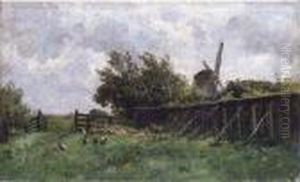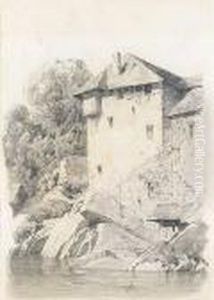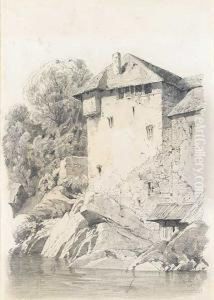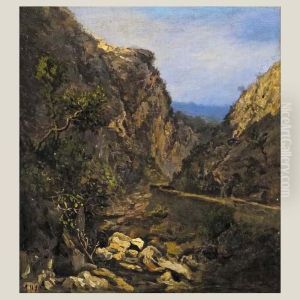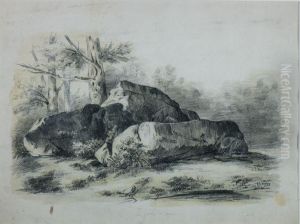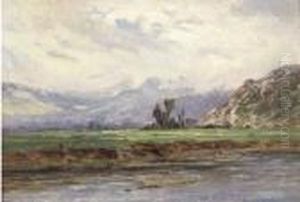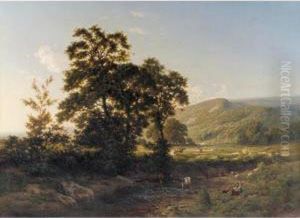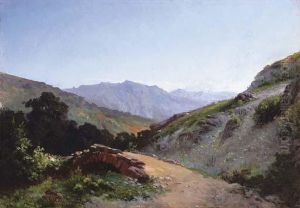Carlos De Haes Y Fortuny Paintings
Carlos de Haes was a Spanish-Belgian landscape painter and a prominent figure in the development of landscape painting in Spain during the 19th century. Born in Brussels on January 27, 1826, to a Spanish father and Belgian mother, he moved to Spain at a young age. His initial artistic training began under the guidance of his uncle, but he later enrolled at the Real Academia de Bellas Artes de San Fernando in Madrid, where he studied under the tutelage of Jenaro Pérez Villaamil, a well-known landscape painter of the time.
De Haes's work was heavily influenced by the Romantic movement, which was characterized by an emphasis on emotion and individualism as well as a reverence for the natural world. He soon became a pioneer of the plein air painting technique in Spain, taking his easel outside the studio to capture landscapes directly from nature. This approach was relatively new to Spanish art, and De Haes played a crucial role in introducing and popularizing it.
In 1857, Carlos de Haes won the competition for a professorship at the Real Academia de Bellas Artes de San Fernando, and he began teaching landscape painting. Among his students was Aureliano de Beruete, who would later become one of Spain's most important landscape painters. De Haes's teaching was innovative for its emphasis on direct observation of the natural world, which was a departure from the classical and historical landscapes favored by previous generations.
Throughout his career, De Haes traveled extensively in Spain and other parts of Europe, capturing diverse landscapes ranging from the mountains of the Sierra de Guadarrama to the rugged coasts of the Mediterranean. His works were well-received, and he exhibited them in various national exhibitions, where he won numerous awards.
Carlos de Haes's dedication to realism and his ability to capture the mood and atmosphere of a landscape had a lasting impact on Spanish art. He bridged the gap between the older Romantic traditions and the newer Impressionist approach to landscape painting that was gaining popularity elsewhere in Europe.
De Haes died on June 17, 1898, in Madrid, leaving behind a legacy as a key figure in the transformation of Spanish landscape painting. His works are held in high regard and can be found in major museums across Spain, including the Museo del Prado in Madrid, which houses some of his most significant paintings.

